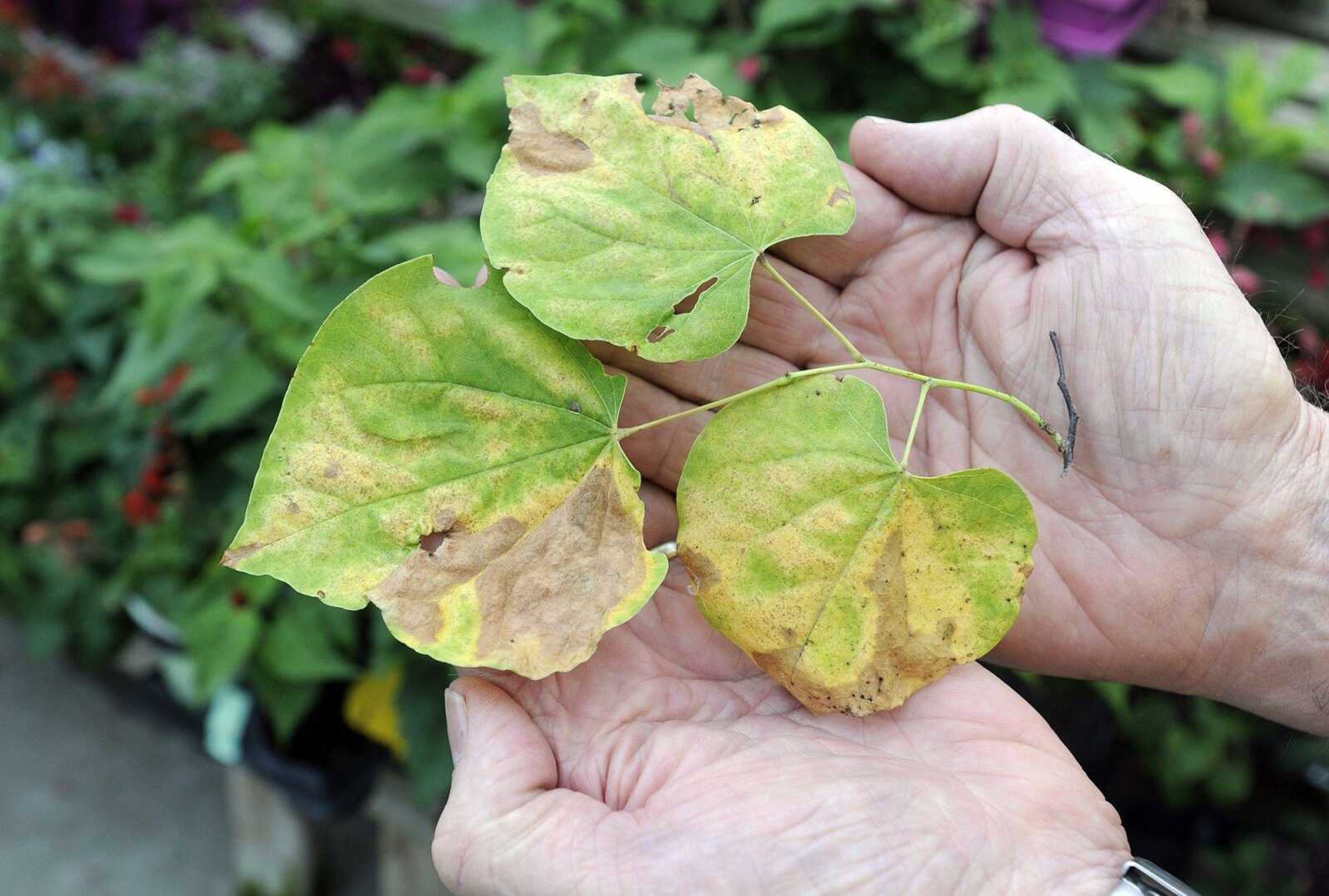Brown leaves mean a problem
Over the last few months, many gardeners have brought me samples of plants that are not doing well. They want to know what to spray on the plant to make it better. In most cases the samples are leaves that have a lot of brown on them and in most cases the transition between brown and green on the leaf is transitional. There is no line of demarcation between the brown and the green...
Over the last few months, many gardeners have brought me samples of plants that are not doing well. They want to know what to spray on the plant to make it better. In most cases the samples are leaves that have a lot of brown on them and in most cases the transition between brown and green on the leaf is transitional. There is no line of demarcation between the brown and the green.
If I find that there is no line of demarcation I ask them if they have been watering the plants. Quite often the answer will be "I give them plenty of water. I water them every evening." Or I may ask them if it has been raining a lot where they live. "Yes it has been raining a lot, but I water every day it doesn't rain. There must be a bug on the plant, or it must have a fungus on it. What do I need to spray it with?"
This column is about watering plants in your landscape and garden. I have had more samples from gardeners this year of plants not doing well in their landscape and garden than usual. After looking at many plant samples I have found that the issue quite often (not always) was water (either too much, or not enough). Let me explain.
In order for a plant to do well, it must be watered properly either by Mother Nature or by a hose or sprinkling can. Proper watering occurs when every pore in the soil around the root system of the plant in question is filled with water. Then the plant roots will absorb the water and the plant leaves will transpire the water.
When most of the water in the soil surrounding the plant roots has been absorbed by the plant, the soil will be dry. Because the soil is dry it has air in between soil particles. This cycling of water in the soil and little water in the soil is the most beneficial situation for most plants growing in the Heartland.
If soils are constantly wet due to watering or rain, the roots begin to rot. When the roots rot, they do not absorb water efficiently and the result is that the leaves suffer from lack of water. The leaves then start to die and show brown areas on them. This what I have seen the most of.
If you are finding issues with the plants in your landscape, check the leaves to determine if the issue is one of water (too much or lack of) or a fungus. If the issue is too much water, wait for the rains to stop. You may also want to apply gypsum around your plants. This will make the soil more porous, which will allow water to drain or evaporate out of the soil quickly.
Connect with the Southeast Missourian Newsroom:
For corrections to this story or other insights for the editor, click here. To submit a letter to the editor, click here. To learn about the Southeast Missourian’s AI Policy, click here.










